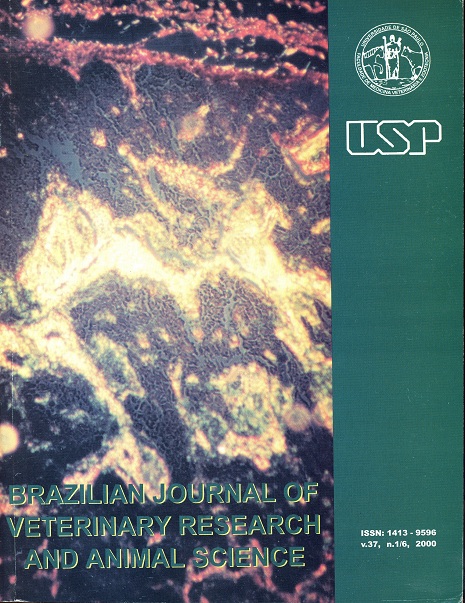Comparative reproductive rates using artificial insemination and natural mating under seasonal influences in swine
DOI:
https://doi.org/10.1590/S1413-95962000000600012Keywords:
Pigs, Indexes, Reproduction, Artificial inseminationAbstract
The data of parturition rate and litter size from the herd of the Veterinary School of São Paulo University were analysed during a four years period (1992 to 1995) in order to compare the data from artificial insemination (IA) and natural mating (CN) in different seasons, trying to study the seasonal influences and define which of these methods would be better in order to reach adequate reproductive rates. Data from 799 breeding (539 IA and 260 CN) in Landrace (L), Large White (LW) females and the cross-breed from both were analysed. Boars (L and LW) with known fertility were used either for IA or for CN. The semen doses used had at least 3 billions spermatozoa in 100 ml. The inseminations were performed 12 and 24 hours after the positive back pressure test in response to the boar, and natural mating were performed at the moment of positive back pressure test and 24 hours later. The fertility rates were 72.9% and 75.8% and the litter size was 12.4 and 12.1, for artificial insemination and natural mating, respectively, which were not different. The season influenced the parturition rate (71.2%, 81.4%, 76.9% and 66.4%, for summer, autumn, winter and spring, respectively; p < 0.05) but not the litter size.Downloads
Downloads
Published
2000-12-01
Issue
Section
VETERINARY MEDICINE
License
The journal content is authorized under the Creative Commons BY-NC-SA license (summary of the license: https://
How to Cite
1.
Candini PH, Viana CHC, Madureira EH, Arruda RP de, Celeghini ECC, Assumpção MEOD, et al. Comparative reproductive rates using artificial insemination and natural mating under seasonal influences in swine. Braz. J. Vet. Res. Anim. Sci. [Internet]. 2000 Dec. 1 [cited 2025 Apr. 6];37(6):486-90. Available from: https://www.revistas.usp.br/bjvras/article/view/5867





